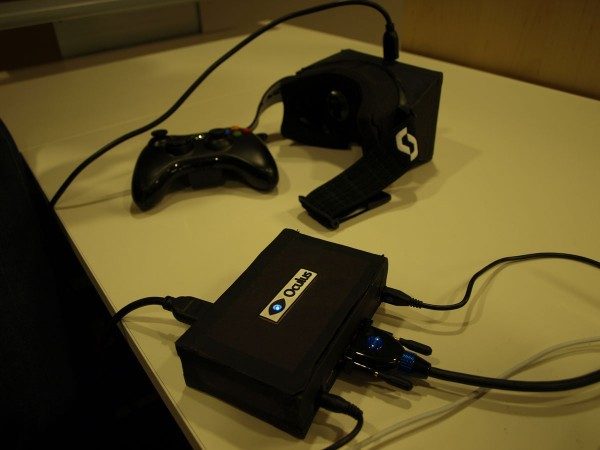
ZeniMax, parent company of Bethesda, Arkane Studios, Zenimax Online Studios, and, John Carmack’s former employer, id Software, is seeking damages for tech it says Carmack stole away to Oculus. “It was only through the concerted efforts of Mr. Carmack, using technology developed over many years at, and owned by, ZeniMax, that Mr. Luckey was able to transform his garage-based pipe dream into a working reality.”
The report comes from the Wall Street Journal who says that they’ve reviewed legal documents sent from ZeniMax to Oculus.
In August of 2013, Oculus announced that the legendary John Carmack would be joining the company as CTO. Carmack was to begin working at Oculus’ newly opened Dallas, Texas office, presumably so that he could remain with id Software. In November, however, Carmack resigned from id Software, saying that, “I wanted to remain a technical adviser for Id, but it just didn’t work out. Probably for the best, as the divided focus was challenging.”
In recent weeks, according to the Wall Street Journal, ZeniMax sent letters to Oculus and Facebook saying that Carmack left with their intellectual property.
See Also: Oculus VR Inc Now Target of Trademark Infringement Case by Oculu LLC
No one would deny that Carmack was instrumental in getting the Oculus Rift off the ground; we summed up the story back when he joined Oculus as CTO:

Cramack had been experimenting with head mounted displays when he came across Palmer Luckey on the MTBS3D forums. Luckey, at the time, was working on a head mounted display prototype (which would eventually become the Oculus Rift) that he expected to sell in small quantity as a DIY kit to other VR enthusiasts. Carmack got in touch with Luckey and asked if he could buy one of the prototypes. Luckey says he was happy to hand over the prototype to Carmack, free of charge.
Carmack made his own modifications to the prototype (involving much duct tape) and began work integrating the device into Doom 3 as a proof of concept. He took the unit to E3 2012 and showed it running with Doom 3 to a swath of press who came away very impressed. With the attention of the press, the Oculus Rift grew into something much more significant, leading up to the famously successful Kickstarter.
It is unclear exactly what technology of Carmack’s ZeniMax is claiming rights to. In my understanding, the foundation of the Rift was already well defined before Carmack got his hands on a very early prototype, including pre-warping of the output image to compensate for lens distortion. Carmack’s early role seemed more about his ability to attract attention to the project, and provide a compelling Doom 3 demo for the unit, than anything else. They could be on about some of the latency mitigation work that Carmack has done.
But according to the Wall Street Journal, ZeniMax, writing to Oculus’ lawyers and Facebook’s general counsel, said “It was only through the concerted efforts of Mr. Carmack, using technology developed over many years at, and owned by, ZeniMax, that Mr. Luckey was able to transform his garage-based pipe dream into a working reality.”
The world of technology intellectual property is a fuzzy one. Non-compete clauses, which seek to prevent employees from leaving to competitors with insider technology, are not uncommon. But as a prolific programmer and hacker, who’s had his hands in everything from Ferraris to rocket science, does ZeniMax have rights to anything that Carmack does while under their employ?
In reference to the claims Oculus says, “It’s unfortunate, but when there’s this type of transaction [the Facebook buyout], people come out of the woodwork with ridiculous and absurd claims. We intend to vigorously defend Oculus and its investors to the fullest extent.”
According to the Wall Street Journal, however, the claims started even before Carmack joined Oculus:
In August 2012, ZeniMax began seeking compensation for the intellectual property, according to people familiar with the discussions. Negotiations continued on and off for nearly six months, with Oculus eventually offering ZeniMax a small equity stake, but no deal was reached, the people said. This past summer, Mr. Carmack joined Oculus, and earlier this year, five ZeniMax employees joined Oculus, the people said.
Looks like the lawyers will be having a fun time with this one.







